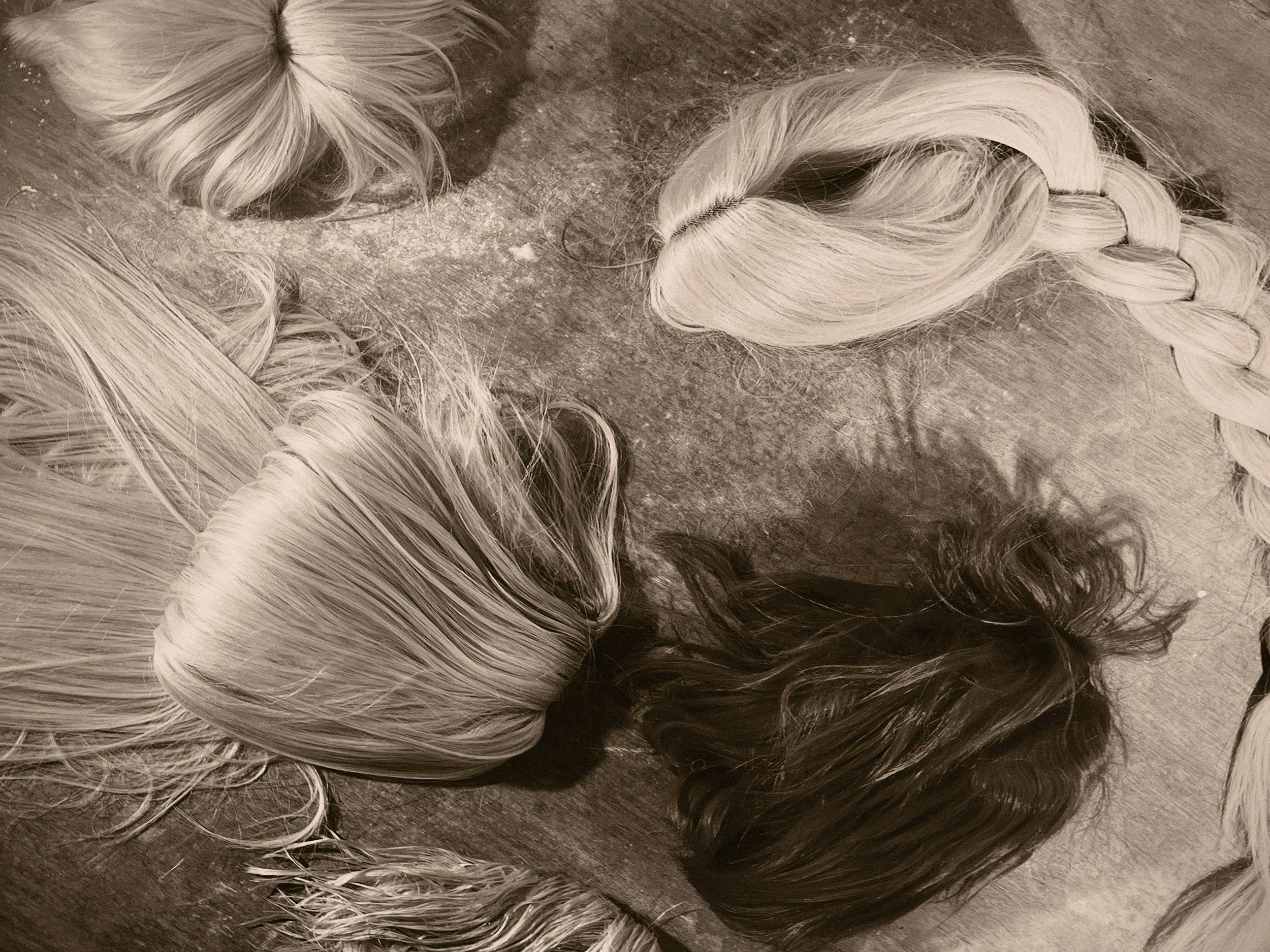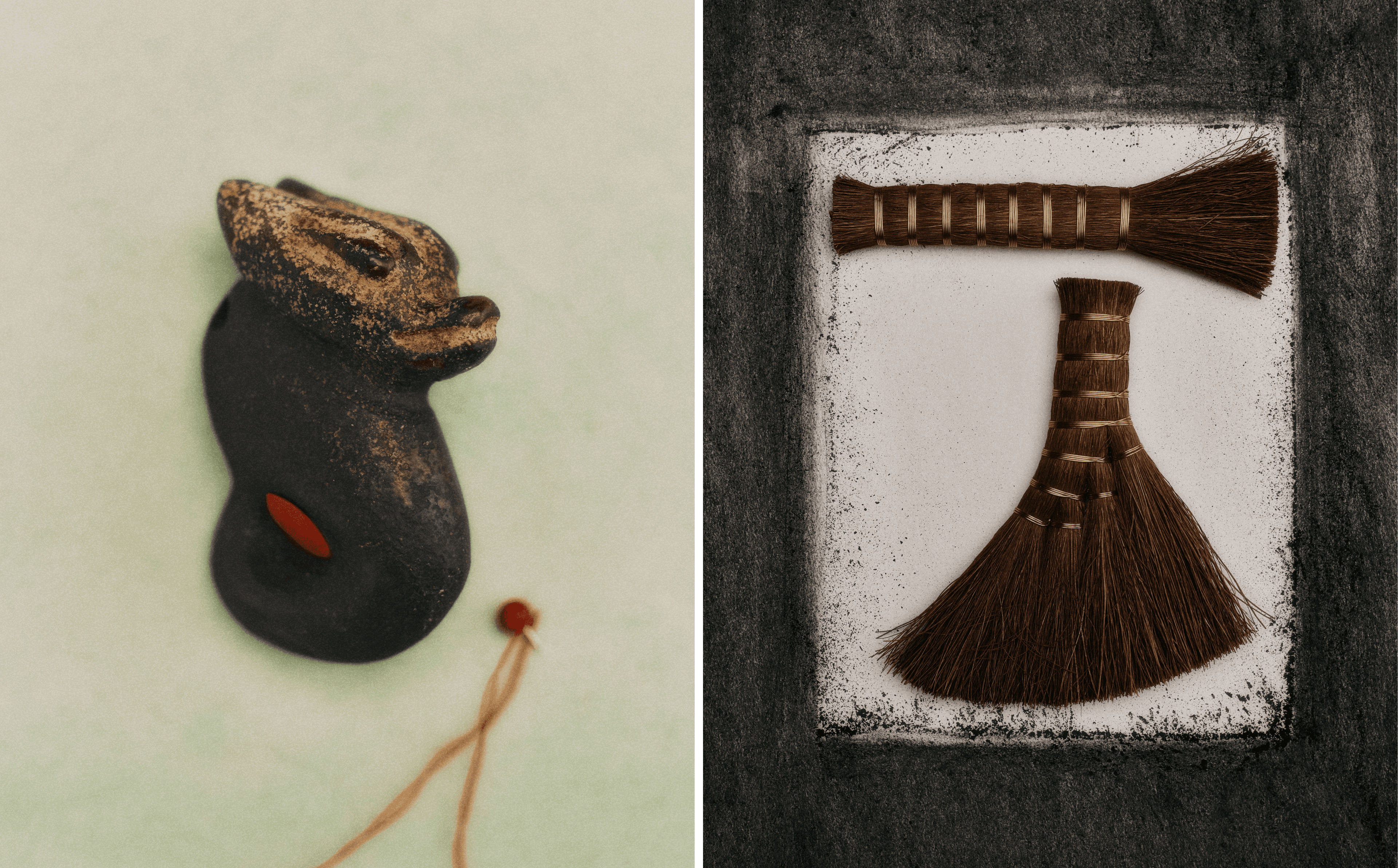
Close to Home
Growing up as the first generation born and raised in America, I often felt disconnected from my own heritage. To bridge that gap, I began visiting flea markets, where I would listen to the stories of old vendors reminiscing about Taiwan. These casual exchanges—sparked by trinkets and relics—became my window into the country’s history, its colonial past, and the personal perspectives of its people.
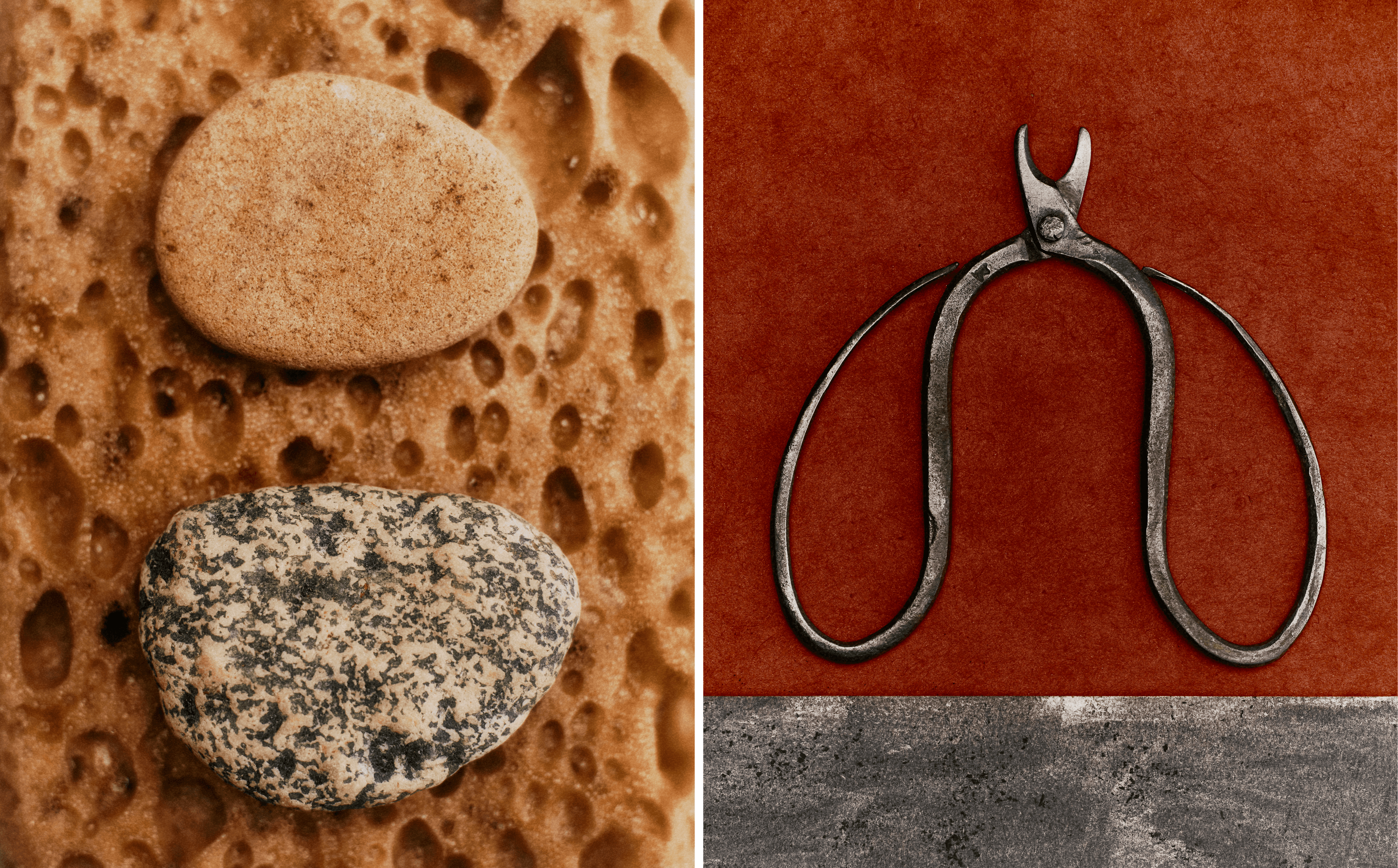
A beautiful pair of iron scissors represents Taiwan’s deep-rooted craftsmanship, while a steel railroad pin symbolizes the country’s achievement of the high-speed rail system. Even the most unassuming objects tell stories of resilience, individualism, and success.
One day, while browsing a local market in Taipei, I found traditional Japanese brushes at a small stall. These brushes immediately connected me to my grandmother’s story. She had fled China after surviving the Japanese occupation and the Chinese Civil War, arriving in Taiwan when she was just eleven. Since then, she has never returned to China. As I held those brushes, I couldn’t help but reflect on her childhood and her life now.
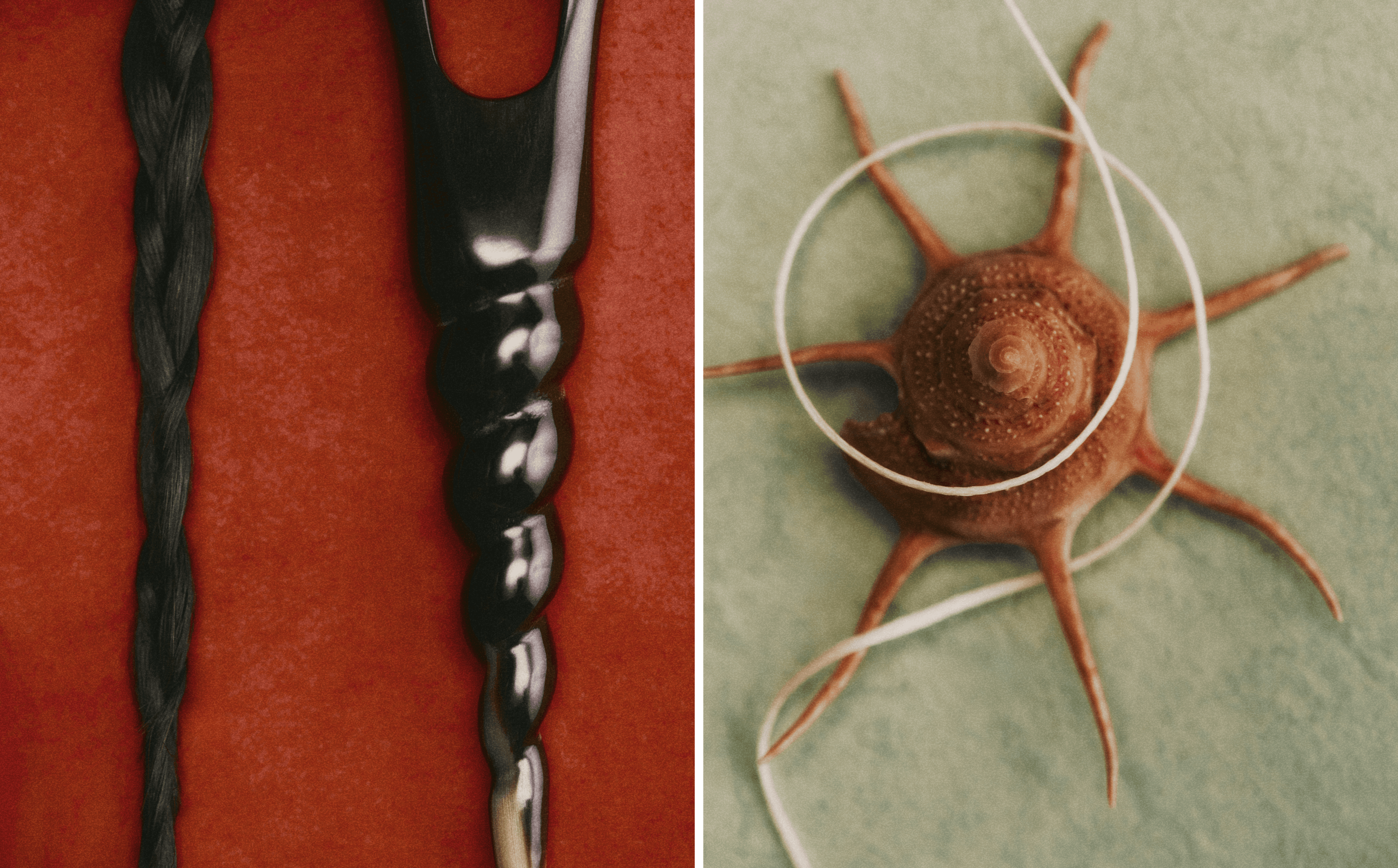
This curiosity led me to another vendor in southern Taipei, where he collected Chinese jade amulets that were worn as protective charms and passed down through generations. The dark residue covering them came from years of being handled, the oils from their owners’ hands evidence of the comfort and assurance they provided. I thought about my own family, who had no heirlooms to pass down—everything had been lost or sold. But I realized that for my grandparents, meaning wasn’t found in objects alone; it was in the care, use, and reverence of everyday things that their history truly lived.
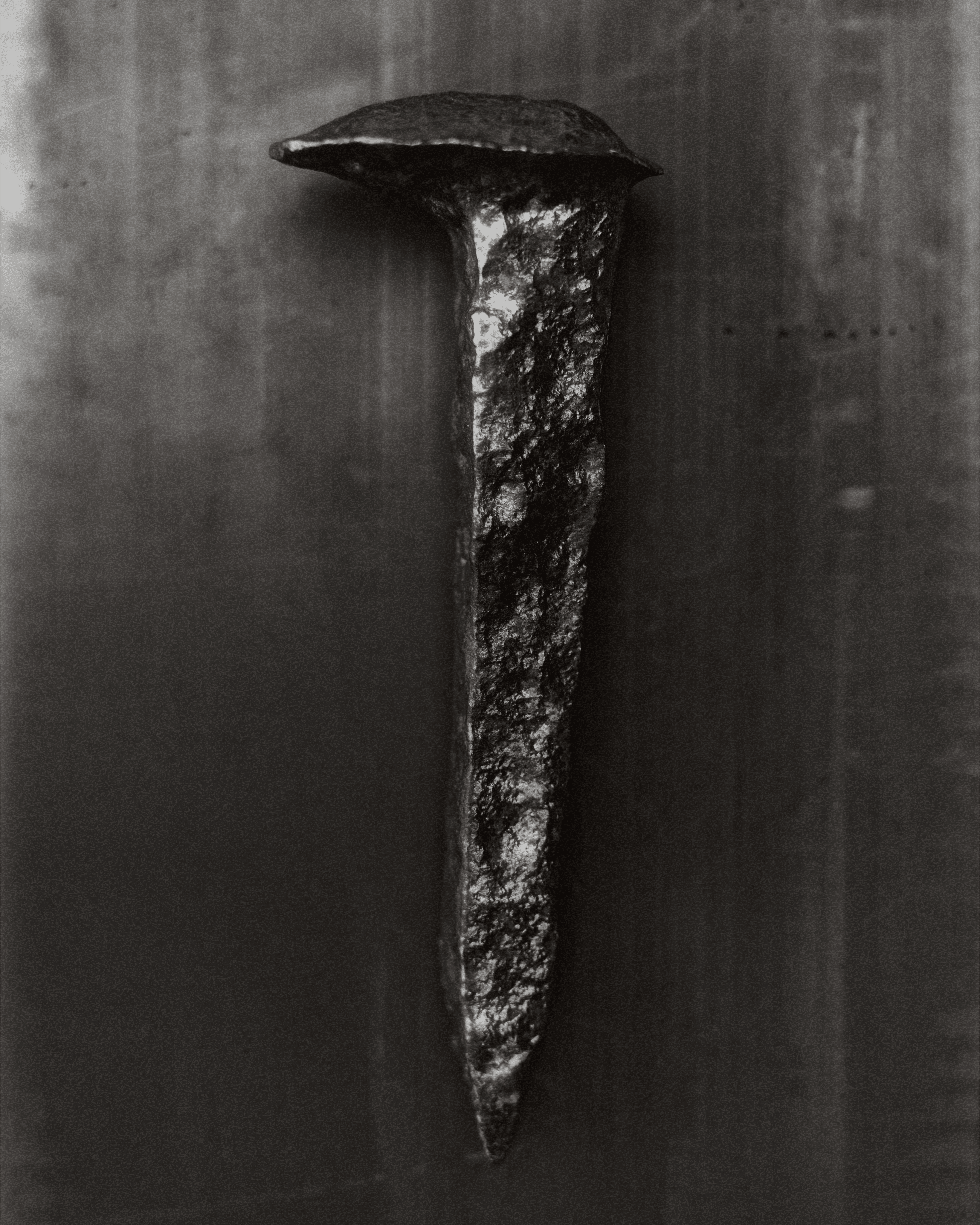
As a nonprofit arts and culture publication dedicated to educating, inspiring, and uplifting creatives, Cero Magazine depends on your donations to create stories like these. Please support our work here.
